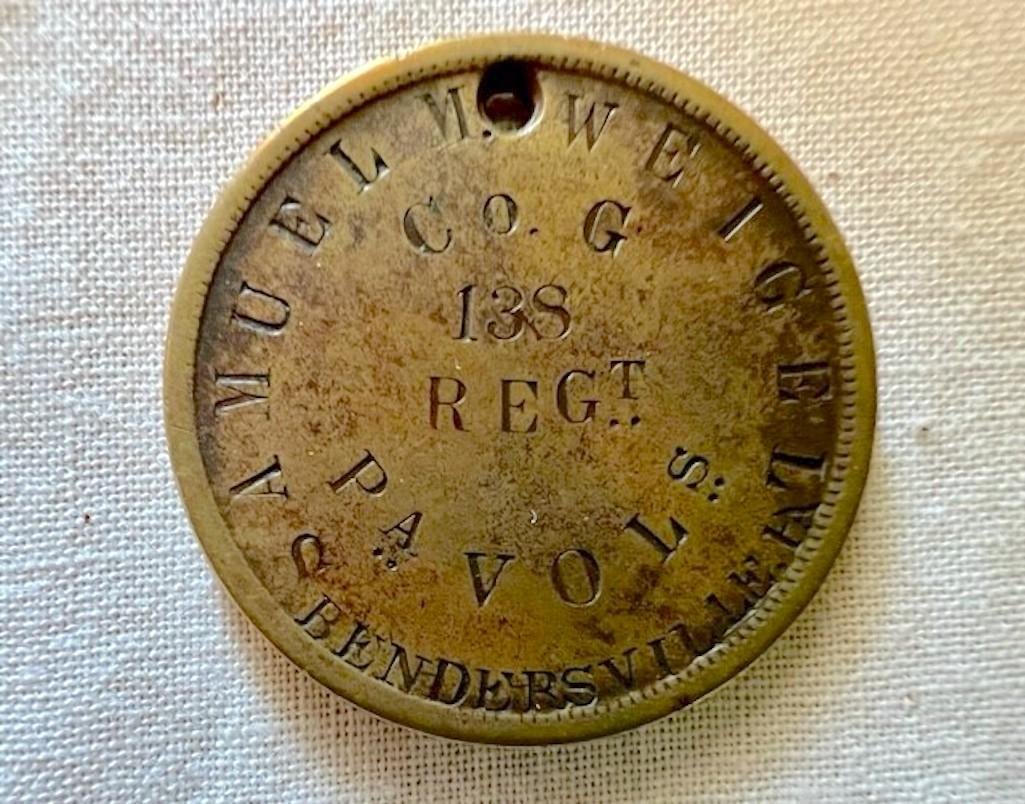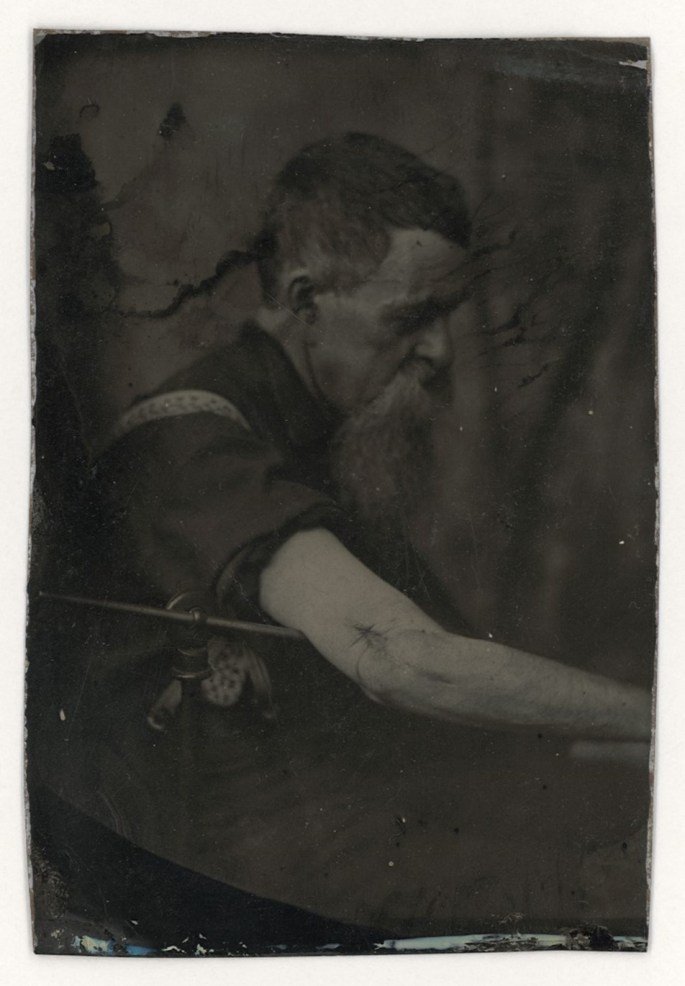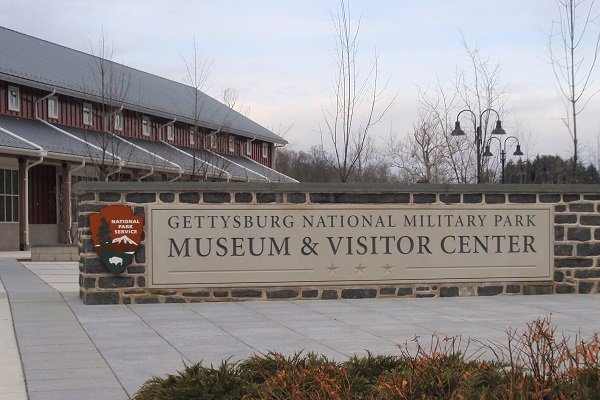Saturdays and Sundays at 1:30 pm
January 8 to March 12, 2022
Gettysburg National Military Park Museum and Visitor Center
Featuring some of the best Rangers, historians, and authors from across the country, the 10-week Winter Lecture Series will once again return to the Gettysburg National Military Park Museum and Visitor Center in 2022! From the Centennial of the Civil War and the complicated legacy of Robert E. Lee, to the creation of the novel The Killer Angels and the evolution of the Gettysburg battlefield, these free hour-long lectures will explore and illuminate the people, places, and continuing legacies of the American Civil War. The Winter Lecture Series is held at 1:30 p.m. on weekends in the Gettysburg National Military Park Museum and Visitor Center from January 8 through March 12, 2022. Free tickets will be available day of at the Gettysburg National Military Park Museum and Visitor Center.
NOTE: Due to the continuing impacts of the Covid pandemic, attendance will be limited to the first one hundred individuals and mask usage in the theaters will be mandatory, regardless of vaccination status.
For those unable to attend in person, all Winter Lectures will be live streamed to the Gettysburg National Military Park YouTube and Facebook Pages.
Sat. Jan. 8 - Following the 11th Virginia during Pickett's Charge
Troy Harman, Gettysburg National Military Park
Join Ranger Troy Harman for a fascinating discussion of the unique challenges faced by the 11th Virginia during Pickett's Charge. From their position on the far right of the assault, to the obstacles they faced during the advance, the experiences of this one regiment provide a distinctive case-study of the most famous attack at Gettysburg.
Sun. Jan. 9 – Personal Turning Points – Jefferson Davis and George Thomas
Bert Barnett, Gettysburg National Military Park
Join historian Bert Barnett as he explores the decisions made by two men during the secession crisis of 1860-61: Jefferson Davis and George Thomas. Both Southerners, each had served the nation long and honorably; each had seen its potential, yet their visions differed. Their disagreement illuminates this important chapter in the history of the American Civil War.
Sat. Jan. 15 – Fighting for Loyalty: Political Life in the Army of the Potomac
Dr. Zachary Fry, U.S. Army Command and General Staff College
The citizen-soldiers who fought at Gettysburg represented the nation’s diversity of political opinion. Whether at headquarters or around the rank-and-file campfire, partisan debate in the Army of the Potomac was usually bitter and personal. And the soldiers were not shy in assuming the role of moral and political conscience of the nation, particularly when antiwar voices threatened the Northern war effort. This lecture explores key moments in which the Union Army argued wartime politics under the public gaze, threatened home front dissent, and mobilized for political campaigning—all while fighting on the front lines of the nation’s most devastating war.
Sun. Jan. 16 – Spying for Longstreet: Lt. Henry Thomas Harrison and the Gettysburg Campaign
Karlton Smith, Gettysburg National Military Park
Accompany Ranger Karlton Smith as he explores the life and career of famed scout, Lt. Henry T. Harrison. From Harrison's role as a scout for General James Longstreet, to his impact on the course of the Gettysburg Campaign, Karlton Smith will separate the fact from fiction behind this fascinating individual.
Sat. Jan. 22 – "The star of blue has turned to gold": Adams County’s Native Sons in WWII
Daniel Vermilya, Eisenhower National Historic Site
World War II impacted every town and city across the United States. The towns and villages of Adams County, Pennsylvania were no different. Over 100 servicemen from Adams County were killed in action or died of their wounds in World War II. Of those, over a dozen were ultimately buried in Gettysburg National Cemetery. Some of these men were born and raised in Gettysburg. Others were tied to Adams County by their careers, education, or family. What they all had in common was they all called this area home. Join Park Ranger Dan Vermilya to explore the stories of these native sons of Adams County who made the ultimate sacrifice in the Second World War.
Sun. Jan. 23 -“Fantasyland Gettysburg”
John Hoptak, Gettysburg National Military Park
It was described as a “magical wooded wonderland,” “a place where fairytales came to life,” and “a famous happy-land of ferns, fountains, flowers, fairytales and fun.” Others believed it to be a blight upon a sacred landscape and an intrusion on hallowed ground. From 1959 through 1980, the theme park Fantasyland Gettysburg entertained children of all ages. Discover more about the rise and fall of this unique place and the era in which it operated at Gettysburg.
Sat. Jan. 29 – Michael Shaara: A Writer’s Life
Matthew Atkinson, Gettysburg National Military Park
Perhaps no other book has influenced public perception of the Battle of Gettysburg more than The Killer Angels. But who was the writer and man behind the prose that won the Pulitzer Prize in 1975? What personal experiences helped influence the writing of this classic historical novel? Discover more about the great writer and share the viewpoint of Ranger Matt Atkinson reading The Killer Angels for the first time.
Sat. Jan. 30 - "Old Buck" The Life and Career of Admiral Franklin Buchanan, CSN
Karlton Smith, Gettysburg National Military Park
Join Ranger Karlton Smith as he examines the U. S. Navy career of Franklin Buchanan. After making the decision to resign in 1861, Buchannan would go South in 1861 to become the only admiral in the Confederate Navy. Buchanan's U. S. Naval service included being chief of staff to Commodore Matthew Perry on his 1854 expedition to open Japan. Buchanan will command the CSS Virginia at Hampton Roads on March 8, 1862, and the CSS Tennessee at Mobile Bay in August 1864.
Sat. Feb. 5 –Robert E. Lee & Me: A Southerners Reckoning with the Myth of the Lost Cause: A Conversation with Ty Seidule
Brig. Gen. Ty Seidule, Hamilton College
Ty Seidule grew up revering Robert E. Lee. From his southern childhood to his service in the U.S. Army, every part of his life reinforced the Lost Cause myth: that Lee was the greatest man who ever lived, and that the Confederates were underdogs who lost the Civil War with honor. Now, as a retired brigadier general and Professor Emeritus of History at West Point, his view has radically changed. From a soldier, a scholar, and a southerner, Ty Seidule believes that American history demands a reckoning.
Sun. Feb. 6 - From Chaos to Solemnity: Emerging Myths and Misconceptions from the Aftermath of Battle
Barbara Sanders, Gettysburg National Military Park
Were Civil War doctors operating as in the Dark Ages? Were the 2,400 Gettysburg civilians left alone to care for the 51,000 battle casualties? Did Lincoln really write the Gettysburg Address on the back of an envelope during the train ride to town? Even after the guns fell silent, Gettysburg was the scene of great chaos, hardship, and sacrifice. But lingering within the mists of this increasingly reverential landscape were several unknowns, some half-truths, and outright falsities. This lecture will explore the myths surrounding Gettysburg, from the immediate aftermath of battle to the dedication ceremony on November 19th and up to repeated myths by some of today's visitors.
Sat. Feb. 12 – “Those Who Died Here…Will Then Have Died in Vain:” Commemorating the Battle of Gettysburg at 100
Dr. Jill Titus, Gettysburg College
Dr. Jill Titus, Associate Director of the Civil War Institute at Gettysburg College, will explore the 100th anniversary of the Battle of Gettysburg and Lincoln’s Gettysburg Address through the lens of civil rights activity and Cold War politics, examining the relationship between historical memory, Civil War commemoration, and contemporary events.
Sun. Feb. 13 – If These Things Could Talk: Treasures from the Collection of Gettysburg National Military Park
Tom Holbrook, Gettysburg National Military Park
Explore the museum collection at Gettysburg National Military Park with Ranger Tom Holbrook and discover some of the fascinating stories each object tells. From the simple to the extraordinary, each piece offers a window into the story of the American Civil War.
Sat. Feb. 19 – Camp Nelson and America’s Complicated Soul
Superintendent Ernie Price, Camp Nelson National Monument
Established as a supply depot and hospital during the Civil War for the U.S. Army, Camp Nelson became a large recruitment and training center for African American soldiers (USCTs), and a refugee camp for their wives and children. Thousands of enslaved people escaped to this site with the hope of securing freedom and ultimately controlling their futures by aiding in the destruction of slavery. Join Superintendent Ernie Price for an exploration of this brand-new unit of the National Park Service.
Sun. Feb. 20 - Framing the Fields
Angela Atkinson, Gettysburg National Military Park
For many of us the battlefield and its features are ingrained in memory, and we have a hard time seeing this landscape as anything other than Gettysburg National Military Park. But how did the park, and all its infrastructure, truly come together under the management of the federal government? Join Supervisory Park Ranger Angie Atkinson as she delves into this important era in battlefield creation and looks at how many of these things came to be.
Sat. Feb. 26 –“If Practicable” at Gettysburg
Troy Harman, Gettysburg National Military Park
The order "if practicable" was given by both General Meade and Lee several times during the Gettysburg Campaign, each time leading to profound outcomes, involving actions or inactions at Cemetery Hill, Little Round Top, and more. It is amazing how the power of words can change the course of history. Join Ranger Harman for an intriguing discussion on how generals interpreted the same words differently to adapt to their situation.
Sun. Feb 27 – Gettysburg’s Rebel Commissioner: The Life and Legacy of William Robbins
Christopher Gwinn, Gettysburg National Military Park
William Robbins served within the ranks of the 4th Alabama Infantry and participated in the fighting at Gettysburg on July 2, 1863. Over thirty years later he returned to the battlefield, this time as a commissioner of the newly created Gettysburg National Military Park. More than almost any other Confederate veteran, Robbins would shape how Americans remembered the battle, specifically the role of the Army of Northern Virginia.
Sat. Mar. 5 – The Fighting Ellet Family
Matthew Atkinson, Gettysburg National Military Park
In 1862, the Union Navy suffered a crushing defeat against the CSS Virginia ironclad ram. Secretary of War Edwin Stanton turned to Charles Ellet to develop a Ram Fleet to counter the Confederate’s technological advances. Along with his son and brother, the Ellet family helped turn the tide on the Mississippi River for the Union and had a few adventures at the same time!
Sat. Mar. 12 – Gettysburg Roots: A Family, a Farm, and the Fight for Freedom
Jared Frederick, Pennsylvania State University – Altoona
Once partially concealed by numerous postwar additions, the Civil War era homestead of Gettysburg blacksmith James Warfield and his family now stands revived to its 1860s appearance along the Millerstown Road. Rehabilitation efforts yielded as many questions as answers. Who were the Warfields? How did they and fellow African American families cope with Confederate invasion? What role did they and descendants play in the Gettysburg community? Finally, how might this historic property convey broader understandings of Civil War America and beyond? Join historian Jared Frederick for this in-depth look chronicling the complexity and courage of Gettysburg's civilian wartime experience.













